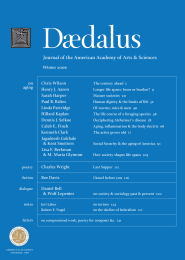Of worms, mice & men: altering rates of aging
The word ‘aging’ has very different implications for wine and women. Matters can improve or deteriorate over time, and the everyday usage of the term can cover either situation.
In the natural world things tend to get worse over the course of adulthood. In mammals and birds, for instance, many long-term field studies have revealed that both likelihood of survival and production of offspring decline later in life. There are exceptions, to be sure. Especially where animals start to procreate before they are fully grown, as is the case in many fish, chances of survival and fecundity can improve over at least part of adulthood.
But in the organism in which most people are really interested, humans, there is a clear deterioration in function over time, after puberty. This is the sense in which I will use the word ‘aging’ in this essay, as the intrinsic decay in function that sets the ultimate limit to life span.
At first sight, aging does not require any special explanation. Machines wear out and fail, so why not living things too? Aging does indeed involve accumulation of damage. The molecules that make up bodies acquire lesions, as do whole cells and tissues. Decrements in the ability to run or to solve problems quickly, for example, reflect this accumulation of damage.
If this were the whole story, then we would expect similar organisms to age at roughly similar rates, but they do not. For instance, bats and monkeys are peculiarly long-lived mammals for their body size; birds, in general, also live much longer than comparably sized mammals. These differences persist in captivity and are thus properties of the species rather than of the individual lifestyle. The rate at which organisms age can, therefore, evolve. By changing the rate at which unrepaired damage accumulates with time, certain biological processes are able to influence the rate of intrinsic decline. It is the activity of these processes that can change during evolution.
Considering its genetic basis and evolutionary change, aging has some very odd characteristics. It is unconditionally deleterious; yet, as far as we know, no genes have evolved to directly cause accumulation of damage, lowered fertility, and death. Earlier ideas that the aging of individuals could be beneficial to the species, by removing the old to make way for the young, are now very largely discredited. If aging itself is a disadvantage, then it cannot evolve by natural selection in its favor and must instead evolve as a side effect of something else.
. . .
